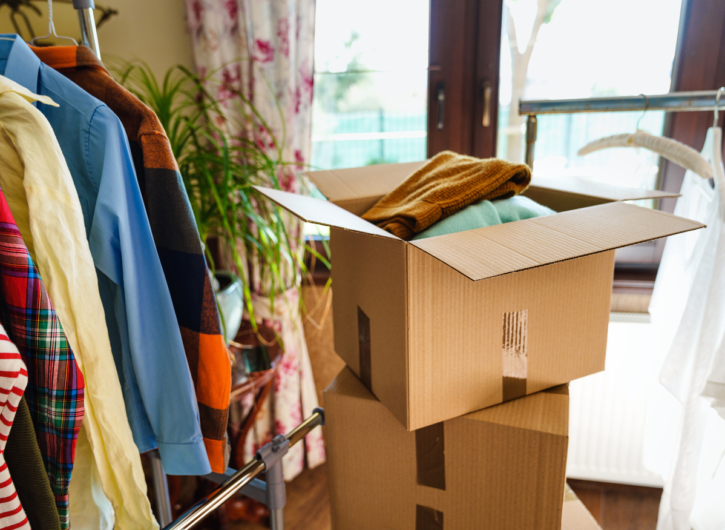9 strategies for making your e-commerce business more eco-friendly
According to forecasts made by Statista, online sales will reach 1.1 trillion dollars in the US by 2029. A new record! But as e-commerce expands and grows, so does packaging. “So many deliveries, this must impact pollution…” – consumers are well aware of the harmful impact of e-commerce on our planet. To reassure visitors to your website, here are nine strategies to make your business more eco-friendly! 🌱
Statistics and major trends in environmentally responsible e-commerce
Ten years ago, the adoption of eco-friendly measures by a business was entirely down to the CEO or e-commerce manager’s personal convictions.
Today, it is an essential and a common-sense issue for most consumers.
The figures prove it:
According to a McKinsey study, 66% of consumers make a purchasing decision, at least in part, based on whether a product is eco-friendly. In the case of millennials, this number rises to 75%.
Another study shows that 72% of consumers buy more eco-friendly products now than they did five years ago, and that 81% of people surveyed expect to buy even more over the coming five years.
Another interesting fact: consumers are willing to spend up to 5% more to purchase products that are environmentally-friendly.
Finally, generations Y (born between 1980 and 2000) and Z (born from 2000) are the most concerned about the durability of the products they buy online.
And this is just the start. According to experts, environmentally-friendly e-commerce will become one of the main concerns of consumers making online purchases in the coming decades.
So, you may as well take the lead now by adopting these nine strategies for making your e-commerce business more eco-friendly.
How do you make your e-commerce business more eco-friendly?
1. Choose an eco-friendly web host
Hosting a website requires a lot of energy. Data centres are made up of thousands of computers that run non-stop, 24/7. These machines need to be kept cool in order for the servers to run smoothly, which consumes a lot of energy.
One action you can take is to change your web host to a more “eco-friendly” one.
Take, for example, O2switch, which:
- uses 94% carbon-free energy
- recycles old equipment (servers)
- sources its servers via short distribution channels
- recycles all its waste (except storage media)
- uses air conditioning sensibly
- is constantly seeking to move towards greener, more sustainable ways of operating.
And all this without compromising on the speed and performance of the sites it hosts! Other hosting providers, such as PlanetHoster and Infomaniak, focus on preserving the environment.
2. Set up dark mode on your e-commerce site
More and more users are reducing the brightness of their devices to save on battery, especially on mobile.
To improve their experience, you can offer the option of reversing the colours on your site, with dark backgrounds and light text. Dark mode offers a better reading experience in low light and reduces eye strain.
Also, worth reading is: “How to optimise your site for m-commerce? (mobile commerce)“
3. Select eco-friendly and reusable packaging
When it comes to packaging, there are a number of good practices you can implement to make your e-commerce ecologically responsible:
- favour cardboard packaging, rather than plastic
- use the right size of packaging for the product
- switch to reusable packaging
♻️
Hipli offers packaging that is reusable 100 times. Customers can select this type of packaging when they choose their delivery method. After being delivered at home, they can simply send them back to the e-tailer by post via the nearest letterbox. The packaging can then be reused by the e-tailer for another delivery.
4. Offer eco-friendly delivery solutions
To have your parcels delivered in an environmentally-friendly way, you can choose service providers who are in tune with your values and those of your customers.
These could be:
- using transporters with clean delivery vehicles (e.g.: hybrid, or even completely electric, vehicles)
- couriers using bicycles or cargo-cycles
- transporters committed to the environment (e.g.: the transporter Bray)
💡
When a customer is not in, often the delivery company will try again the next day. But this uses more fuel. To ensure that this inconvenience happens as infrequently as possible, we advise you to offer free delivery to pick-up points. This will encourage your customers to opt for this more eco-friendly delivery method, as well as facilitate delivery drivers’ work.
5. Encourage Click & Collect
Do you have physical stores? Rather than promoting home delivery, encourage Click & Collect.
This delivery method allows customers to pick up their orders by going to the store themselves which helps you to drastically reduce your company’s carbon emissions, since you’ll have fewer products to deliver.
6. Offer lifetime repair of your products
Office furniture manufacturer, Slean, build products that can be easily repaired to extend their life indefinitely without using glue or solder. In the event of a problem, they can be sent back to the Slean warehouses (located in France) for repair.
This commitment is part of a series of practices implemented by Slean in their quest for zero waste.
Why not set an example by offering lifetime repair of your products? This advice is especially relevant for furniture.
7. Manufacture your products locally or nationally
Shipping your products all over the world is one thing. But it’s quite another for a product to travel the world before it is even sold!
To make your e-commerce site as eco-friendly as possible, you should consider:
- sourcing your raw materials locally or nationally
- manufacturing your products near your headquarters
These actions allow you to limit the use of dedicated transport to move your goods. And ultimately, to reduce the number of miles your products need to travel between their and your customers’ hands.
8. Make your products refillable
Some e-commerce shops, especially in the cosmetic and well-being sector, offer refillable products.
The idea is simple: once empty, consumers return their containers and pay to have them refilled instead of buying a brand-new item.
This strategy drastically limits the creation and sale of plastic. In addition, it helps your customers undertake eco-friendly actions, which is excellent for your brand image.
However, beware, the fact that the containers have to be returned can be an obstacle for some people. Think about offering a more traditional solution for more reticent customers, ideally in an eco-friendly material.
9. Offset your carbon emissions
Despite all your efforts, there’s no denying it: e-commerce is an energy-intensive sector. To reduce your site’s carbon footprint, you can donate to one or more green projects whose activity reduces greenhouse gas emissions.
For example, you could become a member of the charity 1% For the Planet, an international collective of companies, organisations and individuals working together for a healthier planet.
Making your e-commerce business more eco-friendly:
a summary
In summary, here are the best practices to implement to make your e-commerce store more eco-friendly:
- choose an eco-friendly web host
- set up dark mode
- select eco-friendly and reusable packaging
- offer eco-friendly delivery solutions
- encourage Click & Collect
- offer lifetime repair of your products
- manufacture your products locally or nationally
- make your products refillable
- offset your carbon emissions
If you do adopt one or more strategies from this list, we advise you to inform your customers, who will be delighted to learn you are acting to reduce your carbon emissions.
For more information, we invite you to also read our article about stock management in e-commerce.







